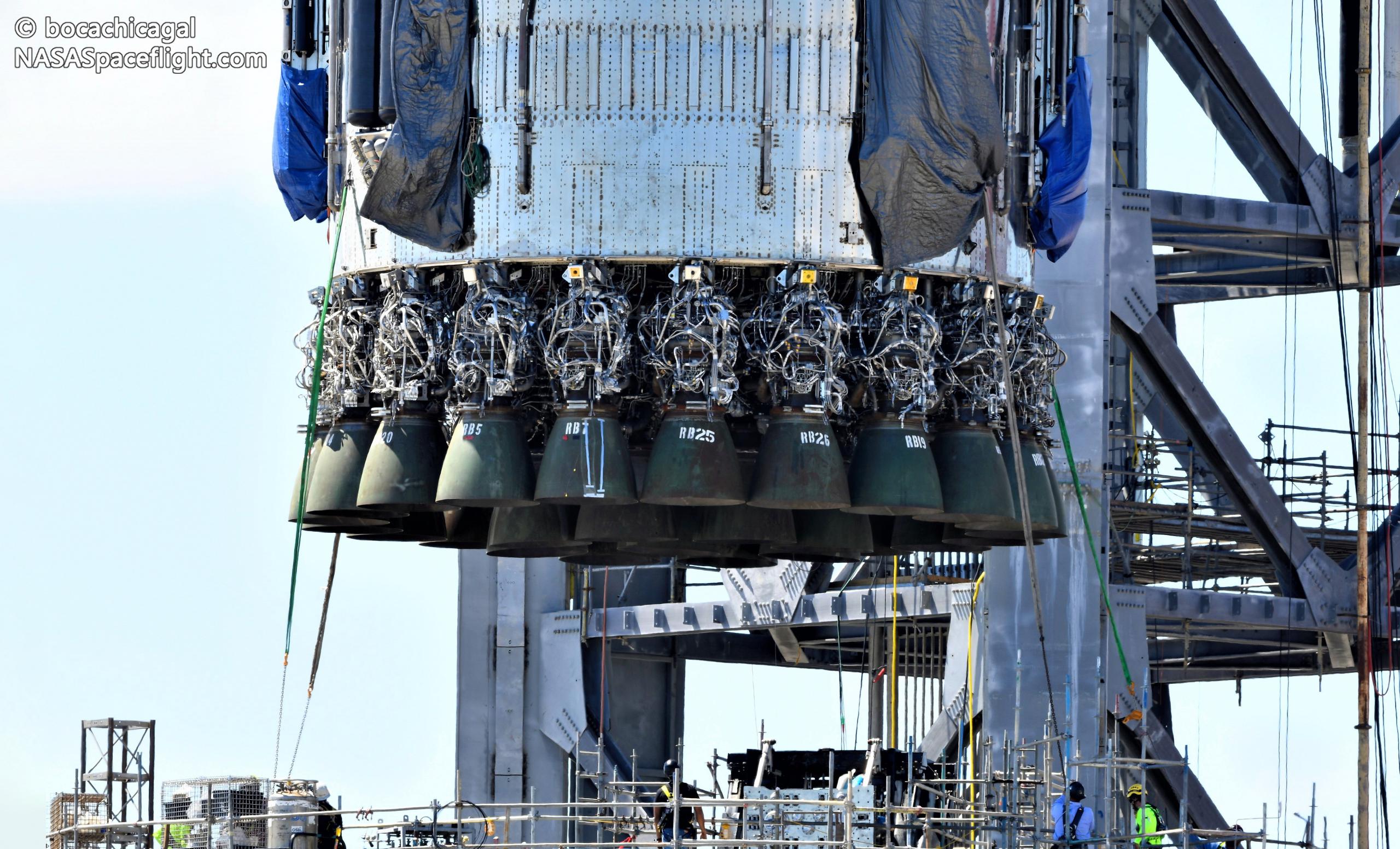
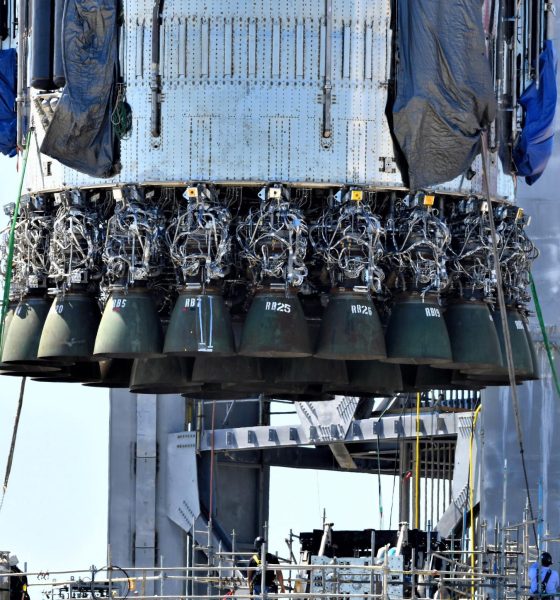
News
SpaceX moves Super Heavy booster to make room for Mechazilla arm installation
For the second time, SpaceX has removed the first potentially flightworthy Super Heavy from Starbase’s orbital launch mount – this time to reportedly make room for the installation of a pair of huge ‘Mechazilla’ arms.
Designed with three primary purposes in mind, SpaceX has decided to outfit Starbase’s Starship launch tower – an almost 500 ft (150m) tall framework – with three massive arms that CEO Elon Musk has informally deemed “Mechazilla.” The first of those arms is a relatively simple swinging structure that has already been installed on the tower and outfitted with a giant claw-like appendage. Once a few more parts are installed and a bit more plumbing completed, that “quick disconnect arm” or QD arm will help stabilize Super Heavy during Starship installation and connect the massive reusable upper stage to the pad’s tank farm and power supplies while still on the ground.
The star of the show, though, has always been a pair of even larger arms that are hoped to one day all SpaceX to catch Super Heavy boosters and Starships out of the air.
Of course, those catcher arms – deemed chopsticks by SpaceX employees – have more than one purpose. Likely explaining why they were ever considered in the first place, SpaceX’s Starbase launch site – situated walking distance from the Gulf of Mexico on the South Texas coast – was always going to have to deal with extreme weather and high winds on a practically daily basis. Additionally, conditions that are already disruptive at sea level become a near-constant nightmare for vertical launch vehicle integration, where Starship and Super Heavy are effectively hollow cylinders with extensive surface areas that need to be regularly and precisely manipulated 50-150m (200-450 ft) above the ground.
Already, SpaceX regularly has to halt work involving cranes and boom lifts at Starbase. For Starbase (Boca Chica) to ever be able to support regular orbital Starship launches, let alone the dozens to hundreds per year Musk has hinted at, cranes were never going to be a viable long-term solution for the all-weather capabilities and rapid reusability SpaceX requires. In other words, whether SpaceX ever actually manages to routinely ‘catch’ the world’s largest rocket booster and upper stage in the future, a tower with giant arms (or some other exotic crane-free solution) was always going to be needed at Starbase.
Mauricio, thanks for the shout-out. I got some great feedback from folks and updated this diagram once more. Added another @NicAnsuini photo to show the scale of these parts! pic.twitter.com/o54hdBITfL— LunarCaveman (@LunarCaveman) September 16, 2021
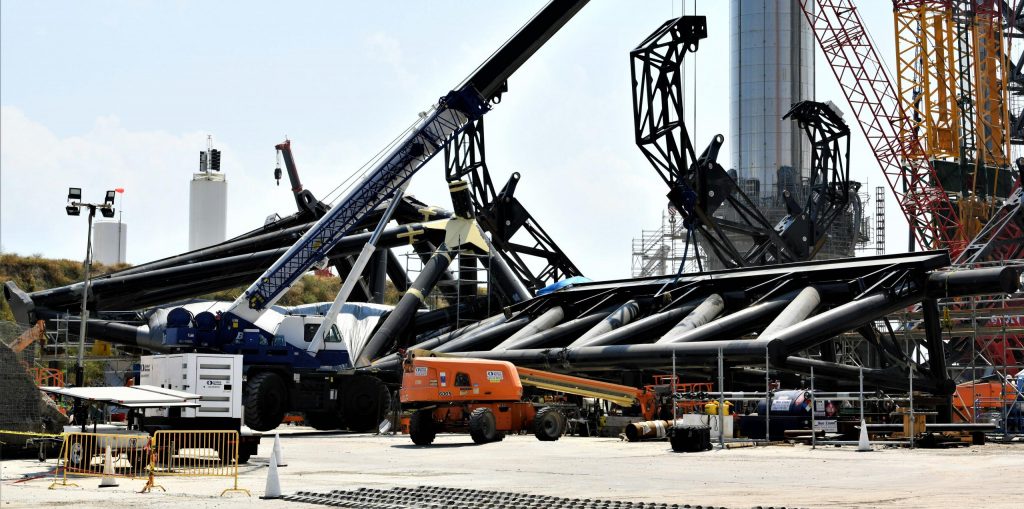
This is all to say that the Starship launch tower’s massive pair of arms – (in)famous for Musk’s plans to catch rockets – have a more immediate and guaranteed purpose: lifting, stacking, and otherwise manipulating Starship and Super Heavy in almost all weather conditions. Using tiny hardpoints located just under Super Heavy’s grid fins and (once installed) under Starship’s forward flaps, the chopstick arms will be mounted on a carriage that will attach to rails installed on the exterior of three of the tower’s arms. A complex system of cables, winches, motors, and pulleys will then attach to that carriage, giving the carriage and its arms the ability to move up and down the tower.
In theory, that means that the launch tower arms will be able to drop down, grab Super Heavy off of a SpaceX transporter, and lift it onto the orbital launch mount. Then, once the quick disconnect arm has swung into place and ‘grabbed’ Super Heavy’s interstage to secure it, the main arms will again drop down, grab Starship off of another transporter, and raise the 50m (~165 ft) rocket around 100m off the ground to install it on top of Super Heavy. Finally, the QD arm can then connect Starship to the pad systems.
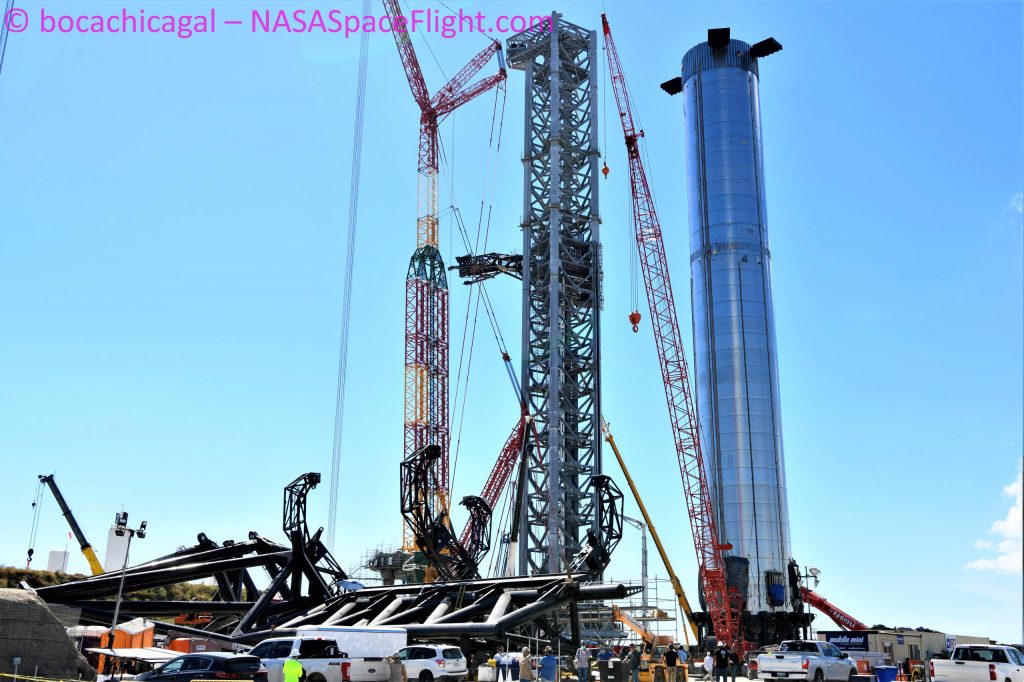
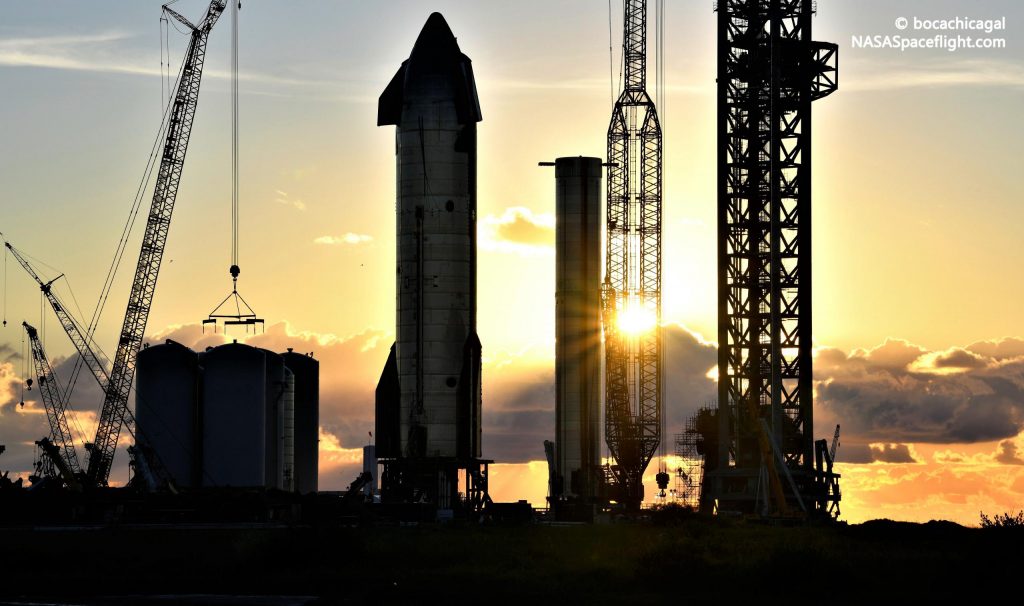
SpaceX has been working around the clock on those chopstick arms for months. However, thanks to information shared by a forum member who visited Starbase and briefly chatted with one of the SpaceX technicians on-site, they might be almost finished. According to the employee they spoke with, SpaceX planned to temporarily remove Super Heavy Booster 4 from the orbital launch mount to make room for Mechazilla chopstick arm installation as early as this weekend (now come and gone) or next week. Mere days later, SpaceX returned B4 to a transport stand and moved the booster out of the way. In other words, having already been proven right with Super Heavy, it appears that SpaceX really does intend to install the Starship launch tower’s chopstick arms and carriage as early as this week. Stay tuned for more!

News
Wedbush’s Dan Ives sees ‘monster year’ ahead for Tesla amid AI push
In a post on X, the analyst stated that the electric vehicle maker could hit a $3 trillion market cap by the end of 2026 in a bullish scenario.

Wedbush analyst Dan Ives is doubling down on Tesla’s (NASDAQ:TSLA) long-term upside. In a post on X, the analyst stated that the electric vehicle maker could hit a $3 trillion market cap by the end of 2026 in a bullish scenario, thanks to the company’s efforts to develop and push its artificial intelligence programs.
An aggressive valuation upside
Ives, Wedbush’s global head of tech research, stated in his post that Tesla is entering a pivotal period as its autonomy and robotics ambitions move closer to commercialization. He expects Tesla’s market cap to reach $2 trillion in 2026, representing roughly 33% upside from current levels, with a bull case up to a $3 trillion market cap by year-end.
Overall, Ives noted that 2026 could become a “monster year” for TSLA. “Heading into 2026, this marks a monster year ahead for Tesla/Musk as the autonomous and robotics chapter begins. We believe Tesla hits a $2 trillion market cap in 2026 and in a bull case scenario $3 trillion by end of 2026… as the AI chapter takes hold at TSLA,” the analyst wrote.
Ives also reiterated his “Outperform” rating on TSLA stock, as well as his $600 per share price target.
Unsupervised Full-Self Driving tests
Fueling optimism is Tesla’s recent autonomous vehicle testing in Austin, Texas. Over the weekend, at least two Tesla Model Ys were spotted driving on public roads without a safety monitor or any other occupants. CEO Elon Musk later confirmed the footage of one of the vehicles on X, writing in a post that “testing is underway with no occupant in the car.”
It remains unclear whether the vehicle was supported by chase cars or remote monitoring, and Tesla has not disclosed how many vehicles are involved. That being said, Elon Musk stated a week ago that Tesla would be removing its Safety Monitors from its vehicles “within the next three weeks.” Based on the driverless vehicles’ sightings so far, it appears that Musk’s estimate may be right on the mark, at least for now.
News
Production-ready Tesla Cybercab hits showroom floor in San Jose
Tesla has implemented subtle but significant updates to both the Cybercab’s exterior and interior elements.
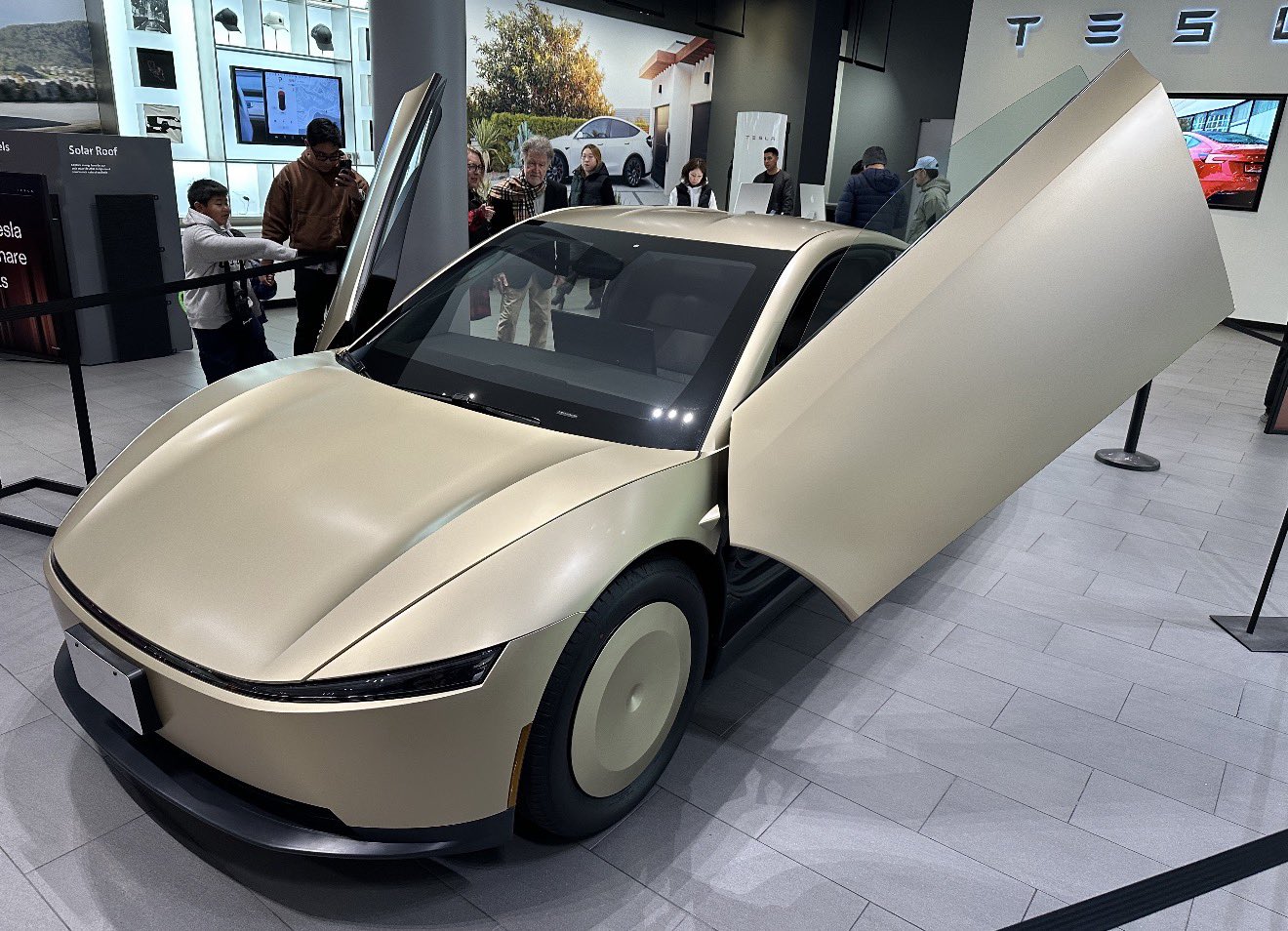
Tesla has showcased what appears to be a near-production-ready Cybercab at its Santana Row showroom in San Jose, California, giving visitors the closest look yet at the autonomous two-seater’s refined design.
Based on photos of the near-production-ready vehicle, the electric vehicle maker has implemented subtle but significant updates to both the Cybercab’s exterior and interior elements, making the vehicle look more polished and seemingly more comfortable than its prototypes from last year.
Exterior and interior refinements
The updated Cybercab, whose photos were initially shared by Tesla advocate Nic Cruz Patane, now features a new frameless window design, an extended bottom splitter on the front bumper, and a slightly updated rear hatch. It also includes a production-spec front lightbar with integrated headlights, new wheel covers, and a license plate bracket.
Notably, the vehicle now has two windshield wipers instead of the prototype’s single unit, along with powered door struts, seemingly for smoother opening of its butterfly doors. Inside, the Cybercab now sports what appears to be a redesigned dash and door panels, updated carpet material, and slightly refined seat cushions with new center cupholders. Its legroom seems to have gotten slightly larger as well.
Cybercab sightings
Sightings of the updated Cybercab have been abundant in recent months. At the end of October, the Tesla AI team teased some of the autonomous two-seater’s updates after it showed a photo of the vehicle being driven through an In-N-Out drive-through by employees in Halloween costumes. The photos of the Cybercab were fun, but they were significant, with longtime Tesla watchers noting that the company has a tradition of driving its prototypes through the fast food chain’s drive-throughs.
Even at the time, Tesla enthusiasts noticed that the Cybercab had received some design changes, such as segmented DRLs and headlamps, actual turn signals, and a splitter that’s a lot sharper. Larger door openings, which now seem to have been teasing the vehicle’s updated cabin, were also observed at the time.
Investor's Corner
Tesla analyst realizes one big thing about the stock: deliveries are losing importance
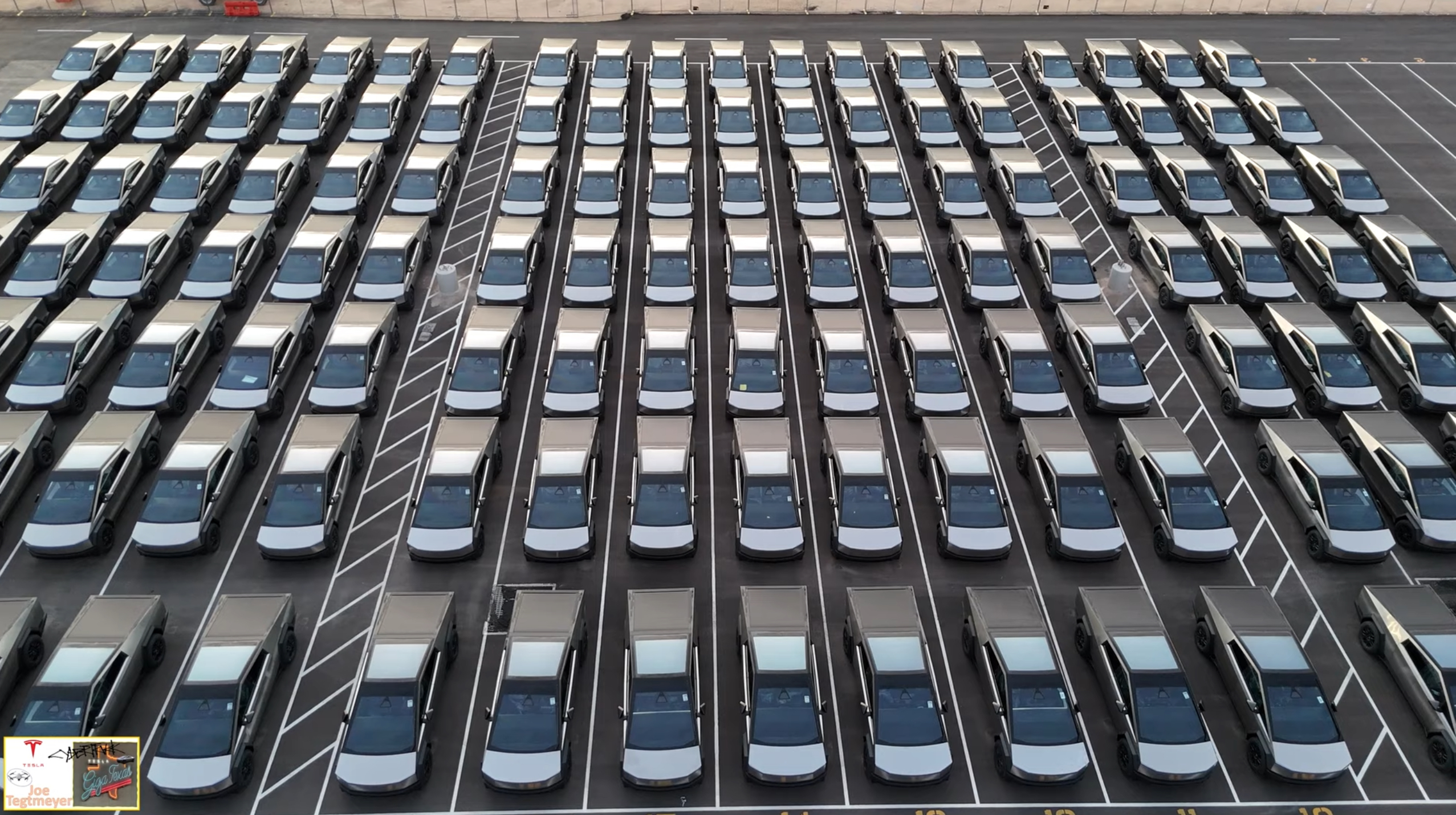
Tesla analyst Dan Levy of Barclays realized one big thing about the stock moving into 2026: vehicle deliveries are losing importance.
As a new era of Tesla seems to be on the horizon, the concern about vehicle deliveries and annual growth seems to be fading, at least according to many investors.
Even CEO Elon Musk has implied at times that the automotive side, as a whole, will only make up a small percentage of Tesla’s total valuation, as Optimus and AI begin to shine with importance.
He said in April:
“The future of the company is fundamentally based on large-scale autonomous cars and large-scale and large volume, vast numbers of autonomous humanoid robots.”
Almost all of Tesla’s value long-term will be from AI & robots, both vehicle & humanoid
— Elon Musk (@elonmusk) September 11, 2023
Levy wrote in a note to investors that Tesla’s Q4 delivery figures “likely won’t matter for the stock.” Barclays said in the note that it expects deliveries to be “soft” for the quarter.
In years past, Tesla analysts, investors, and fans were focused on automotive growth.
Cars were truly the biggest thing the stock had to offer: Tesla was a growing automotive company with a lot of prowess in AI and software, but deliveries held the most impact, along with vehicle pricing. These types of things had huge impacts on the stock years ago.
In fact, several large swings occurred because of Tesla either beating or missing delivery estimates:
- January 3, 2022: +13.53%, record deliveries at the time
- January 3, 2023: -12.24%, missed deliveries
- July 2, 2024: +10.20%, beat delivery expectations
- October 3, 2022: -8.61%, sharp miss due to Shanghai factory shutdown
- July 2, 2020: +7.95%, topped low COVID-era expectations with sizeable beat on deliveries
It has become more apparent over the past few quarters that delivery estimates have significantly less focus from investors, who are instead looking for progress in AI, Optimus, Cybercab, and other projects.
These things are the future of the company, and although Tesla will always sell cars, the stock is more impacted by the software the vehicle is running, and not necessarily the vehicle itself.








